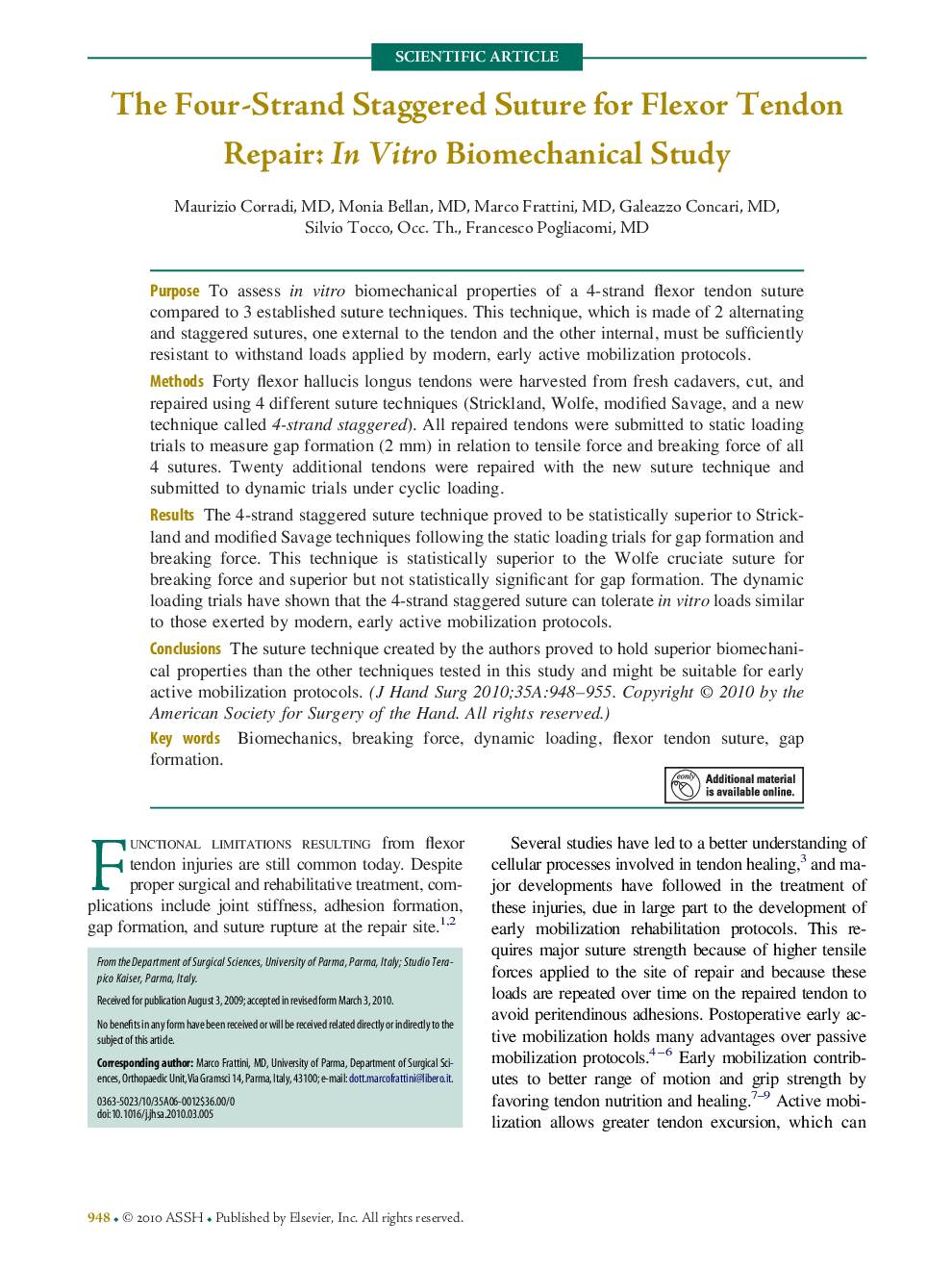| Article ID | Journal | Published Year | Pages | File Type |
|---|---|---|---|---|
| 4070949 | The Journal of Hand Surgery | 2010 | 8 Pages |
PurposeTo assess in vitro biomechanical properties of a 4-strand flexor tendon suture compared to 3 established suture techniques. This technique, which is made of 2 alternating and staggered sutures, one external to the tendon and the other internal, must be sufficiently resistant to withstand loads applied by modern, early active mobilization protocols.MethodsForty flexor hallucis longus tendons were harvested from fresh cadavers, cut, and repaired using 4 different suture techniques (Strickland, Wolfe, modified Savage, and a new technique called 4-strand staggered). All repaired tendons were submitted to static loading trials to measure gap formation (2 mm) in relation to tensile force and breaking force of all 4 sutures. Twenty additional tendons were repaired with the new suture technique and submitted to dynamic trials under cyclic loading.ResultsThe 4-strand staggered suture technique proved to be statistically superior to Strickland and modified Savage techniques following the static loading trials for gap formation and breaking force. This technique is statistically superior to the Wolfe cruciate suture for breaking force and superior but not statistically significant for gap formation. The dynamic loading trials have shown that the 4-strand staggered suture can tolerate in vitro loads similar to those exerted by modern, early active mobilization protocols.ConclusionsThe suture technique created by the authors proved to hold superior biomechanical properties than the other techniques tested in this study and might be suitable for early active mobilization protocols.
